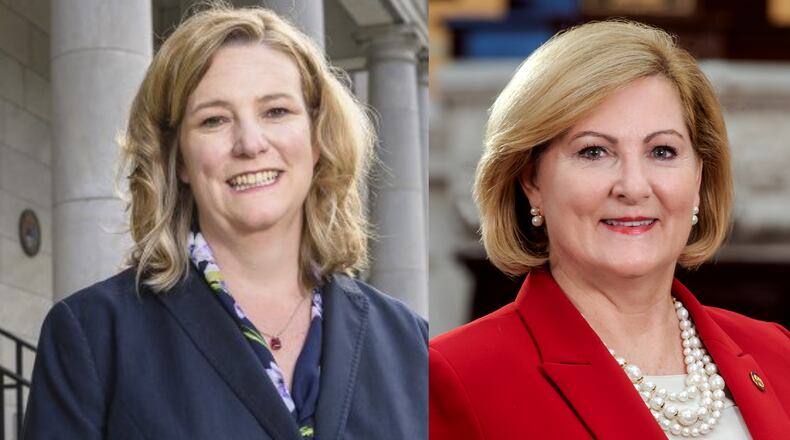“I had a guy today say to me, ‘I don’t know about two women on the ticket,’” she said as we talked at her campaign headquarters this past Thursday.
Actually, three women are running for high office this election cycle. Whaley named Cheryl Stephens, a Cuyahoga County councilwoman, as her running mate. Cincinnati Mayor John Cranley, also running in the Democratic primary, picked Ohio Sen. Theresa Fedor of Toledo as his running mate.
I had not originally planned to write a column about the difficulties women still face in politics. I wanted to write about Whaley the person because I don’t think we get to know enough about the people we’re considering for elected office. I wanted to write about the long drives across the state, staying in the homes of supporters she doesn’t know, and how this run is different from the one in 2018.
But her anecdote threw me and got me wondering — what the hell?
As it turns out, there are answers to that question.
Roughly seven out of 10 women and half of men believe it’s harder for a woman to prove herself, according to the Pew Research Center. About half of those polled believe women get less support from party leaders, and some 45% believe Americans aren’t ready to elect a woman to higher office. More women believed that to be true in 2018 than they did four years earlier.
“There are fewer women running for a number of reasons,” Lee Hannah, an associate professor in the school of public and internal affairs at Wright State University said. “First, there are still differences in the way that men and women are socialized, where men are more likely to be encouraged to take on leadership and more likely to be encouraged in their ambition. And so these pipelines to leadership are often formed early and favor men over women.”
Paul Beck, a professor emeritus of political science at Ohio State University put it succinctly: “It may be that Ohioans are just kind of more conservative socially than people in other places.”
More conservative than Kentucky and Texas? Martha Collins won the governorship in Kentucky in 1986. Texas elected Democrat Ann Richards in 1990. That same year, Nebraskans elected Kay Orr. Today, nine women — six Democrats and three Republicans — serve as governor. The District of Columbia, Puerto Rico and Guam all have women in their top leadership positions.
Maybe it’s me, but I always wonder why in the world people still think this way. Then I have to remind myself of our (very recent) history. It wasn’t until 2007 that a woman became speaker of the U.S. House of Representatives. It took until 2013 before the U.S. military removed a ban on women from fighting in active combat. Going back a little further, we had to wait until 1981 before a U.S. president (Ronald Regan) nominated a woman (Sandra Day O’Connor) to the Supreme Court.
Who still objects to women in higher office? “These (are) people probably more conservative on a variety of things,” Beck said. “Socially, certainly. A belief, for example, that a women’s place is in the home, not in the workplace. Or in politics. There still are people who harbor that kind of opinion. And some of them are women, by the way.”
(Cut to me shaking my head).
A woman being elected governor “has never been done before,” Whaley noted. “So when something’s never been done before, most people think it can’t happen.”
I still don’t get why that’s a thing.
Ray Marcano is a long-time journalist whose column appears on these pages each Sunday. He can be reached at raymarcanoddn@gmail.com.
About the Author

